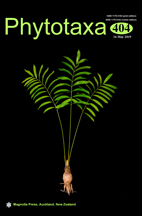Abstract
A new dinoflagellate species (Dinophyceae, Gymnodiniales)—Apicoporus haificum Krachmalny sp. nov. was described on a basis of thorough light microscopy studies. The species was found in sandy sediments (water-filled spaces between sand grains) on the eastern coast of the Mediterranean Sea (HaCarmel beach, Haifa, Israel). Apicoporus haificum possesses the following features: cells elongated (with length exceeding width by 3.1–3.8 times), lanceolate in dorsoventral projection, roundish in cross-section with slight dorsoventral compression, asymmetrical, slightly curved to the right, with antapical depression. Epicone asymmetrical, somewhat umbonate, with a small hook-shaped protrusion on the apex. Cingulum displaced, descending by 1/3 cell’s length, its distal part almost parallel to the anterior portion of sulcus. Sulcus narrow, shallow, extends from the apex to the antapical depression, with apical groove. Cell surface covered with longitudinal striations that converge on the apex and on the antapical protrusion. Chloroplasts absent. Dimensions: 75.3±2.2 μm in length, 21.4±1.5 μm in width. Comparison of A. haificum to morphologically similar Apicoporus glaber and Amphidinium scissum is discussed.

